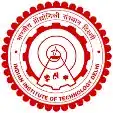Latest Applications Open 2024:
The IIT JAM Economics Syllabus for 2025 has been officially released by IIT Delhi, the conducting authority for the IIT JAM 2025 Exam. Students can download the syllabus in PDF format to aid in their preparation. This examination is highly esteemed, offering bachelor-qualified students an opportunity to earn a master’s degree and advance their qualifications significantly.
Students can check below to download the IIT JAM 2025 Syllabus in PDF format. For better preparation, Candidates can also Download other Syllabus in PDF format.
The IIT JAM 2025 Examination will be held on 2nd February 2025. It is a very reputed and best examination for bachelor-qualified students, which will give them a master’s degree from this course and be higher qualified.
IIT JAM 2025 Economic Syllabus – PDF Available
IIT JAM 2025 Economics Syllabus has been Available now. Click to Download Economics (EN) Syllabus PDF.
Microeconomics
Consumer theory: Preference, utility and representation theorem, budget constraint, choice, demand (ordinary and compensated), Slutsky equation, revealed preference axioms
Theory of production and cost: Production technology, isoquants, production function with one or more inputs, returns to scale, short-run and long-run costs, cost curves in the short run and long-run
Latest Applications For Various UG & PG Courses Open 2024
-
- Parul University | Admissions Open for All Courses 2024. Apply Now
- Chandigarh University | Admissions Open for All Courses 2024. Apply Now
- NIIT | Admissions Open for All Courses 2024. Apply Now
- KL University | Admissions Open for All Courses 2024. Apply Now
- Alliance UG | Admissions Open for All Courses 2024. Apply Now
- GD Goenka | Admissions Open for All Courses 2024. Apply Now
General equilibrium and welfare: Equilibrium and efficiency under pure exchange and production, welfare economics, theorems of welfare economics
Market structure: Perfect competition, monopoly, pricing with market power, price discrimination (first, second and third), monopolistic competition and oligopoly
Game theory: Strategic form games, iterated elimination of dominated strategies, Nash equilibrium, mixed extension and mixed strategy Nash equilibrium, examples: Cournot,
Bertrand duopolies, Prisoner’s dilemma Public goods and market failure: Externalities, public goods and markets with asymmetric information (adverse selection and moral hazard)
Macroeconomics
National income accounting: Structure, key concepts, measurements, and circular flow of income – for closed and open economy, money, fiscal and foreign sector variables – concepts and measurements
Behavioural and technological functions: Consumption functions – absolute income hypothesis, life-cycle and permanent income hypothesis, random walk model of consumption, investment functions – Keynesian, money demand and supply functions, production function
Business cycles and economic models (closed economy): Business cycles-facts and features, the Classical model of the business cycle, the Keynesian model of the business cycle, simple Keynesian cross model of income and employment determination and the multiplier (in a closed economy), IS-LM Model, Hicks’ IS-LM synthesis, the role of monetary and fiscal policies
Business cycles and economic models (open economy): Open economy, MundellFleming model, Keynesian flexible price (aggregate demand and aggregate supply) model, role of monetary and fiscal policies
Inflation and unemployment: Inflation – theories, measurement, causes, and effects, unemployment – types, measurement, causes, and effects
Growth models: Harrod-Domar, Solow and Neo-classical growth models (AK model, Romer model and Schumpeterian growth model)
Statistics for Economics
Probability theory: Sample space and events, axioms of probability and their properties, conditional probability and Bayes’ rule, independent events, random variables and probability distributions, expectation, variance and higher order moments, functions of random variables, properties of commonly used discrete and continuous distributions, density and distribution functions for jointly distributed random variables mean and variance of jointly distributed random variables, covariance and correlation coefficients
Mathematical statistics: Random sampling, types of sampling, point and interval estimation, estimation of population parameters using methods of moments and maximum likelihood procedures, properties of estimators, sampling distribution, confidence intervals, central limit theorem, law of large number
Hypothesis testing: distributions of test statistics, testing hypotheses related to population parameters, Type I and Type II errors, the power of a test, tests for comparing parameters from two samples
Correlation and regression: Correlation and types of correlation, the nature of regression analysis, method of Ordinary Least Squares (OLS), CLRM assumptions, properties of OLS, goodness of fit, variance and covariance of the OLS estimator
Indian Economy
Indian economy before 1950: Transfer of tribute, deindustrialization of India
Planning and Indian development: Planning models, relation between agricultural and industrial growth, challenges faced by Indian planning
Indian economy after 1991: Balance of payments crisis in 1991, major aspects of economic reforms in India after 1991, reforms in trade and foreign investment
Banking, finance and macroeconomic policies: aspects of banking in India, CRR and SLR, financial sector reforms in India, fiscal and monetary policy, savings and investment rates in India
Inequalities in social development: India’s achievements in health, education and other social sectors, disparities between Indian States in human development
Poverty: Methodology of poverty estimation, Issues in poverty estimation in India
India’s labour market: unemployment, labour force participation rates
Mathematics for Economics
Preliminaries and functions: Set theory and number theory, elementary functions: quadratic, polynomial, power, exponential, logarithmic, functions of several variables, graphs and level curves, convex set, concavity and quasiconcavity of function, convexity and quasi-convexity of functions, sequences and series: convergence, algebraic properties and applications, complex numbers and its geometrical representation, De Moivre’s theorem and its application
Differential calculus: Limits, continuity and differentiability, mean value theorems, Taylor’s theorem, partial differentiation, gradient, chain rule, second and higher-order derivatives:
properties and applications, implicit function theorem, and application to comparative statics problems, homogeneous and homothetic functions: characterisations and applications
Integral calculus: Definite integrals, fundamental theorems, indefinite integrals and applications
Differential equations, and difference equations: First-order difference equations, first-order differential equations and applications
Linear algebra: Matrix representations and elementary operations, systems of linear equations: properties of their solution, linear independence and dependence, rank, determinants,
eigenvectors and eigenvalues of square matrices, symmetric matrices and quadratic forms, definiteness and semidefiniteness of quadratic forms
Latest Applications For Various UG & PG Courses Open 2024
-
- Parul University | Admissions Open for All Courses 2024. Apply Now
- Chandigarh University | Admissions Open for All Courses 2024. Apply Now
- NIIT | Admissions Open for All Courses 2024. Apply Now
- KL University | Admissions Open for All Courses 2024. Apply Now
- Alliance UG | Admissions Open for All Courses 2024. Apply Now
- GD Goenka | Admissions Open for All Courses 2024. Apply Now
Optimization: Local and global optima: geometric and calculus-based characterisations, and applications, multivariate optimization, constrained optimization and method of Lagrange multiplier, second order condition of optima, definiteness and optimality, properties of value function: envelope theorem and applications, linear programming: graphical solution, matrix formulation, duality, economic interpretation.
IIT JAM Economics Syllabus 2025 FAQs
What is the importance of set theory and number theory in economics?
Set theory and number theory provide foundational concepts used in defining economic models, particularly in areas like decision theory and game theory. They help in understanding logical relationships and numerical representations in economic analysis.
Why are elementary functions like quadratic, polynomial, exponential, and logarithmic functions important in economics?
These functions are fundamental in modelling various economic phenomena such as production functions, utility functions, and growth rates. They allow economists to mathematically describe relationships and behaviours observed in economic data.
How do convex sets and concavity/quasiconcavity of functions relate to economics?
Convex sets and concavity/quasiconcavity of functions play a crucial role in optimization problems, ensuring that solutions are efficient and unique in economic models. They also help in understanding preferences and utility maximization.
What is the significance of sequences and series in economics?
Sequences and series are used to analyze economic time series data, assess convergence in economic models, and understand the behaviour of economic variables over time. They are essential in studying economic growth and fluctuations.
Why is differential and integral calculus important in economics?
Differential calculus is used to study rates of change, optimization problems (e.g., profit maximization), and marginal analysis in economics. Integral calculus is essential for calculating areas under curves, which are critical in computing total economic quantities such as total revenue and consumer surplus.
What role do linear algebra and matrix operations play in economic analysis?
Linear algebra is essential for solving systems of linear equations, analyzing input-output models, and understanding the properties of matrices used in economic modelling. It helps in studying economic equilibrium and optimizing economic systems.
How are differential equations and difference equations applied in economics?
Differential equations are used to model dynamic economic processes such as population growth, investment dynamics, and economic fluctuations. Difference equations are employed to study discrete changes over time, such as in time series analysis and economic forecasting.
What is the significance of optimization techniques in economics?
Optimization techniques such as constrained optimization and linear programming are crucial for solving resource allocation problems, production efficiency, and utility maximization in economic decision-making. They help economists find optimal solutions under given constraints.
Why are concepts like homogeneity, and homotheticity, and their applications important in economic theory?
Homogeneous and homothetic functions help in analyzing scale effects and income distribution in economic models. They are used to understand how changes in variables affect economic outcomes and to derive comparative statics results.
How do economic policies like fiscal and monetary policies relate to the topics covered in this syllabus?
Economic policies such as fiscal policy (government spending and taxation) and monetary policy (control of money supply and interest rates) are informed by economic theories covered in this syllabus. Concepts like optimization, equilibrium analysis, and differential equations are used to analyze the effects and effectiveness of these policies in achieving macroeconomic goals such as stable prices, full employment, and economic growth.
If you have any other queries regarding IIT JAM Economics Syllabus 2025, you can ask us by commenting below.

As a dedicated Biology Science graduate, I’m passionate about sharing the latest updates in national and state entrance exams through my blog. I aim to keep aspiring students informed about exam trends, important dates, and changes in syllabi. With a keen interest in education, I strive to offer valuable insights for students navigating the competitive landscape of entrance examinations and admission tests. Stay updated with me.

